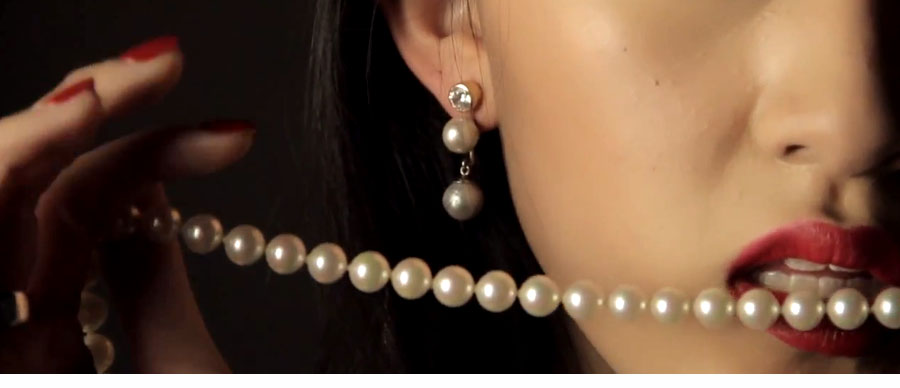January 6th, 2022
We love to write about romantic marriage proposals, but today we take a deep dive into the murky subject of who gets to keep the engagement ring when a relationship fails and the wedding never takes place.

Although there is no uniform law in the US or Canada regarding the return of engagement rings after a breakup, the Alabama Court of Appeals recently ruled that an engagement ring given on the condition of marriage must be returned to the giver if the relationship fails.
According to court records, an Alabama man proposed to his then-girlfriend on Christmas Eve of 2018 with a ring valued at $32,000. Later in 2019, the girlfriend had a change of heart and broke off the engagement. The ex-boyfriend asked for the ring, but she claimed that she tossed it into the intracoastal waterway. The ex-girlfriend later admitted that she sold the ring for the heavily discounted price of $10,000.
The ex-boyfriend sued to get the value of the ring back, but lost his case at a county circuit court, with that judge ruling that the ring was given as a Christmas present and the ex-girlfriend had no obligation to return it.
That verdict was flipped by the Alabama Court of Appeals, which determined that the woman was "unjustly enriched" at her ex-boyfriend’s expense, while adding that the gift was given on the condition of a marriage. Since the marriage never took place, the court ordered the woman to pay back the $32,000.
Back in 2014, a New York county judge allowed a Valley Stream woman to keep her $10,200 diamond ring even though she broke off the relationship with her fiancé, who was also the father of their child. The woman argued that her ex gave her the ring as a “a gift for being a great woman, a good mother of his child.” The judge agreed, stating that the ring was “given as a gift and not in contemplation of marriage.”
According to an article posted by Virginia-based law firm SmolenPlevy, most states view an engagement ring as a semi-contract, or a “conditional gift.” In this view, the ring is given with the understanding that the couple will get married in the future and symbolizes a verbal contract. Ownership of the ring is not fully transferred until the wedding ceremony is completed.
A few jurisdictions, explained SmolenPlevy, take a slightly different view, calling the ring an “implied gift.” In this case, ownership of the ring is determined by whomever calls off the wedding. If the giver breaks it off, he or she is not entitled to the ring, and it becomes a gift. If the receiver breaks off the engagement, the giver can ask for the ring back.
Ownership of the ring can also be complicated by whether the ring was a family heirloom, or whether it was given as a “gift” on a holiday or birthday, for example.
The non-legal, but traditional, etiquette calls for the engagement ring to be returned to the giver if the recipient breaks the relationship, or if the breakup was mutual. If the giver is responsible for the breakup, the receiver controls the destiny of the ring.
SmolenPlevy recommends that the best way to avoid costly, emotional and drawn-out litigation is to enter into a prenuptial or premarital agreement, which outlines clearly who will get the ring if the wedding never takes place. This agreement also can cover what happens to the ring if the couple gets married but later divorces.
Credits: Image by BigStockPhoto.com.

Although there is no uniform law in the US or Canada regarding the return of engagement rings after a breakup, the Alabama Court of Appeals recently ruled that an engagement ring given on the condition of marriage must be returned to the giver if the relationship fails.
According to court records, an Alabama man proposed to his then-girlfriend on Christmas Eve of 2018 with a ring valued at $32,000. Later in 2019, the girlfriend had a change of heart and broke off the engagement. The ex-boyfriend asked for the ring, but she claimed that she tossed it into the intracoastal waterway. The ex-girlfriend later admitted that she sold the ring for the heavily discounted price of $10,000.
The ex-boyfriend sued to get the value of the ring back, but lost his case at a county circuit court, with that judge ruling that the ring was given as a Christmas present and the ex-girlfriend had no obligation to return it.
That verdict was flipped by the Alabama Court of Appeals, which determined that the woman was "unjustly enriched" at her ex-boyfriend’s expense, while adding that the gift was given on the condition of a marriage. Since the marriage never took place, the court ordered the woman to pay back the $32,000.
Back in 2014, a New York county judge allowed a Valley Stream woman to keep her $10,200 diamond ring even though she broke off the relationship with her fiancé, who was also the father of their child. The woman argued that her ex gave her the ring as a “a gift for being a great woman, a good mother of his child.” The judge agreed, stating that the ring was “given as a gift and not in contemplation of marriage.”
According to an article posted by Virginia-based law firm SmolenPlevy, most states view an engagement ring as a semi-contract, or a “conditional gift.” In this view, the ring is given with the understanding that the couple will get married in the future and symbolizes a verbal contract. Ownership of the ring is not fully transferred until the wedding ceremony is completed.
A few jurisdictions, explained SmolenPlevy, take a slightly different view, calling the ring an “implied gift.” In this case, ownership of the ring is determined by whomever calls off the wedding. If the giver breaks it off, he or she is not entitled to the ring, and it becomes a gift. If the receiver breaks off the engagement, the giver can ask for the ring back.
Ownership of the ring can also be complicated by whether the ring was a family heirloom, or whether it was given as a “gift” on a holiday or birthday, for example.
The non-legal, but traditional, etiquette calls for the engagement ring to be returned to the giver if the recipient breaks the relationship, or if the breakup was mutual. If the giver is responsible for the breakup, the receiver controls the destiny of the ring.
SmolenPlevy recommends that the best way to avoid costly, emotional and drawn-out litigation is to enter into a prenuptial or premarital agreement, which outlines clearly who will get the ring if the wedding never takes place. This agreement also can cover what happens to the ring if the couple gets married but later divorces.
Credits: Image by BigStockPhoto.com.


